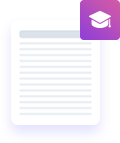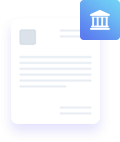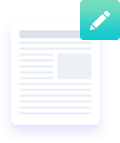COE Lesson Plan Template
Compare the “COE Lesson Plan Template” to the seven elements of EEI in your required reading. Discuss the similarities and differences between the two.
Just like our students, each teacher is different in strengths and struggles. Finding a lesson plan template that works in all areas can take some time, but once you identify one that helps you plan your day, you’ll likely stick with it. The EEI, or Essential Elements of Instruction Model, may just be that tool.
The EEI model focuses on components of teaching which are essential for every lesson. Based on the Madeline Hunter model, the EEI criteria are:
Title – You write the name your lesson here for easy identification along with any other pertinent information.
Materials – This section allows an area to list all necessary supplies that will be used in the lesson, including those for both you and your students.
Curriculum Standards – This is where you will write any standards used for the lesson.
Anticipatory Set – Often called the ‘hook’, this stage is meant to get students interested in the lesson, connect to prior knowledge, and set the stage for learning.
Objective – In this section, you will list performance and learning objectives your students will achieve. Be sure to use verbs from Bloom’s taxonomy or other source. The terms must be measurable and shared with students.
Purpose – This states the reason for the lesson.
Instructional input – Here you will note the activities and methods you will use to teach, including direct instruction, etc.
Modeling – You will demonstrate the skill in this part of the lesson.
Check for Understanding – This focuses on methods you will use to determine if your students are catching on. You will use these strategies throughout the lesson.
Guided Practice – This marks the active learning time completed by your students with your support.
Closure – At the end of lesson, you summarize and share learning while connecting the lesson to future learning.
Extended/Independent Practice – To increase student understanding, here you will list methods of learning students will complete after the lesson, such as homework or projects.
Here the COE lesson plan : Section 1: Lesson Preparation
Teacher Candidate Name:
Grade Level:
Date:
Unit/Subject:
Instructional Plan Title:
Lesson Summary and Focus: In 2-3 sentences, summarize the lesson, identifying the central focus based on the content and skills you are teaching.
Classroom and Student Factors/Grouping: Describe the important classroom factors (demographics and environment) and student factors (IEPs, 504s, ELLs, students with behavior concerns, gifted learners), and the effect of those factors on planning, teaching, and assessing students to facilitate learning for all students. This should be limited to 2-3 sentences and the information should inform the differentiation components of the lesson.
National/State Learning Standards: Review national and state standards to become familiar with the standards you will be working with in the classroom environment.
Your goal in this section is to identify the standards that are the focus of the lesson being presented. Standards must address learning initiatives from one or more content areas, as well as align with the lesson’s learning targets/objectives and assessments.
Include the standards with the performance indicators and the standard language in its entirety.
Specific Learning Target(s)/Objectives: Learning objectives are designed to identify what the teacher intends to measure in learning. These must be aligned with the standards. When creating objectives, a learner must consider the following:
• Who is the audience
• What action verb will be measured during instruction/assessment
• What tools or conditions are being used to meet the learning
What is being assessed in the lesson must align directly to the objective created. This should not be a summary of the lesson, but a measurable statement demonstrating what the student will be assessed on at the completion of the lesson. For instance, “understand” is not measureable, but “describe” and “identify” are.
For example:
Given an unlabeled map outlining the 50 states, students will accurately label all state names.
Academic Language In this section, include a bulleted list of the general academic vocabulary and content-specific vocabulary you need to teach. In a few sentences, describe how you will teach students those terms in the lesson.
Resources, Materials, Equipment, and Technology: List all resources, materials, equipment, and technology you and the students will use during the lesson. As required by your instructor, add or attach copies of ALL printed and online materials at the end of this template. Include links needed for online resources.
Section 2: Instructional Planning
Anticipatory Set
Your goal in this section is to open the lesson by activating students’ prior knowledge, linking previous learning with what they will be learning in this lesson and gaining student interest for the lesson. Consider various learning preferences (movement, music, visuals) as a tool to engage interest and motivate learners for the lesson.
In a bulleted list, describe the materials and activities you will use to open the lesson. Bold any materials you will need to prepare for the lesson.
For example:
• I will use a visual of the planet Earth and ask students to describe what Earth looks like.
• I will record their ideas on the white board and ask more questions about the amount of water they think is on planet Earth and where the water is located.
Time Needed
Multiple Means of Representation
Learners perceive and comprehend information differently. Your goal in this section is to explain how you would present content in various ways to meet the needs of different learners. For example, you may present the material using guided notes, graphic organizers, video or other visual media, annotation tools, anchor charts, hands-on manipulatives, adaptive technologies, etc.
In a bulleted list, describe the materials you will use to differentiate instruction and how you will use these materials throughout the lesson to support learning. Bold any materials you will need to prepare for the lesson.
For example:
• I will use a Venn diagram graphic organizer to teach students how to compare and contrast the two main characters in the read-aloud story.
• I will model one example on the white board before allowing students to work on the Venn diagram graphic organizer with their elbow partner.
Explain how you will differentiate materials for each of the following groups:
• English language learners (ELL):
• Students with special needs:
• Students with gifted abilities:
• Early finishers (those students who finish early and may need additional resources/support):
Time Needed
Multiple Means of Engagement
Your goal for this section is to outline how you will engage students in interacting with the content and academic language. How will students explore, practice, and apply the content? For example, you may engage students through collaborative group work, Kagan cooperative learning structures, hands-on activities, structured discussions, reading and writing activities, experiments, problem solving, etc.
In a bulleted list, describe the activities you will engage students in to allow them to explore, practice, and apply the content and academic language. Bold any activities you will use in the lesson. Also, include formative questioning strategies and higher order thinking questions you might pose.
For example:
• I will use a matching card activity where students will need to find a partner with a card that has an answer that matches their number sentence.
• I will model one example of solving a number sentence on the white board before having students search for the matching card.
• I will then have the partner who has the number sentence explain to their partner how they got the answer.
Explain how you will differentiate activities for each of the following groups:
• English language learners (ELL):
• Students with special needs:
• Students with gifted abilities:
• Early finishers (those students who finish early and may need additional resources/support):
Time Needed
Multiple Means of Expression
Learners differ in the ways they navigate a learning environment and express what they know. Your goal in this section is to explain the various ways in which your students will demonstrate what they have learned. Explain how you will provide alternative means for response, selection, and composition to accommodate all learners. Will you tier any of these products? Will you offer students choices to demonstrate mastery? This section is essentially differentiated assessment.
In a bulleted list, explain the options you will provide for your students to express their knowledge about the topic. For example, students may demonstrate their knowledge in more summative ways through a short answer or multiple-choice test, multimedia presentation, video, speech to text, website, written sentence, paragraph, essay, poster, portfolio, hands-on project, experiment, reflection, blog post, or skit. Bold the names of any summative assessments.
Students may also demonstrate their knowledge in ways that are more formative. For example, students may take part in thumbs up-thumbs middle-thumbs down, a short essay or drawing, an entrance slip or exit ticket, mini-whiteboard answers, fist to five, electronic quiz games, running records, four corners, or hand raising. Underline the names of any formative assessments.
For example:
Students will complete a one-paragraph reflection on the in-class simulation they experienced. They will be expected to write the reflection using complete sentences, proper capitalization and punctuation, and utilize an example from the simulation to demonstrate their understanding. Students will also take part in formative assessments throughout the lesson, such as thumbs up-thumbs middle-thumbs down and pair-share discussions, where you will determine if you need to re-teach or re-direct learning.
Explain if you will differentiate assessments for each of the following groups:
• English language learners (ELL):
• Students with special needs:
• Students with gifted abilities:
• Early finishers (those students who finish early and may need additional resources/support):
Time Needed
Extension Activity and/or Homework
Identify and describe any extension activities or homework tasks as appropriate. Explain how the extension activity or homework assignment supports the learning targets/objectives. As required by your instructor, attach any copies of homework at the end of this template.
Time Needed
Rationale/Reflection
After writing your complete lesson plan, explain three instructional strategies you included in your lesson and why. How do these strategies promote collaboration, communication, critical thinking, and creativity? Bold the name of the strategy.
For example:
• Think-Pair-Share promotes engagement, communication, and collaboration because all students get a chance to share their ideas or answers. This is beneficial to students because they get to put their ideas into words, and hear and discuss the perspectives of others.















